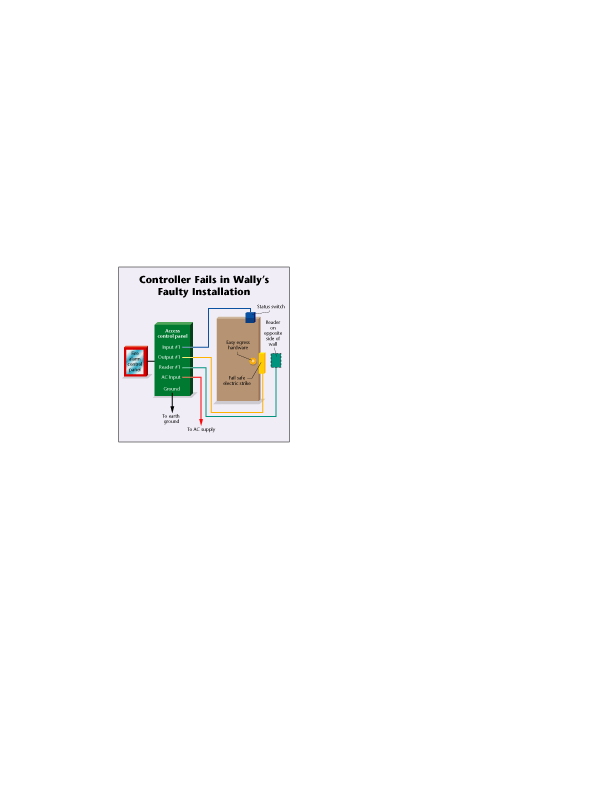Bringing the Theater Sound Home
Before offering this exciting product you must make sure that you have the requisite knowledge to design and install all of the components that comprise a home theater system and that you keep up on this fast changing technology. To see if you have what it takes to add home theater to your bag of tricks, take the following quiz.
1. In a 5.1 surround sound system which speaker(s) carry most of the dialog?a. Left and right front speakers
b. Center speaker
c. Subwoofer
d. Surround speakers
e. None of the above
2. In a 5.1 surround sound system which speaker(s) carry most of the soundtrack?
a. Left and right front speakers
b. Center speaker
c. Subwoofer
d. Surround speakers
e. None of the above
3. The center speaker gives a sound system the .1 designation.
a. True
b. False
4. In a 5.1 surround sound system which speaker(s) reproduce the low and very low frequency effects?
a. Left and right front speakers
b. Center speaker
c. Subwoofer
d. Surround speakers
e. None of the above
5. Dolby digital AC-3 supports up to 5.1 channels of audio.
a. True
b. False
6. What is the maximum size room that components with a THX select certification are certified to perform in?
a. 1,000 cubic feet
b. 2,000 cubic feet
c. 3,000 cubic feet.
d. Size does not matter
7. Which of the following is an example of a SACD disc?
a. Single layer
b. Dual layer
c. Hybrid layer
d. All of the above
e. None of the above
8. DSD technology has a sam- pling rate up over 2,000,000 samples per second.
a. True
b. False
9. Standard audio CD technology has a sampling rate up over 44,000 samples per second.
a. True
b. False
10. DVD audio technology has a sampling rate up over 190,000 samples per second.
a. True
b. False
11. Typically humans can hear sounds between
a. 10 Hz to 10,000 Hz.
b. 20 Hz to 10,000 Hz.
c. 20 Hz to 20,000 Hz.
d. 20 Hz to 200,000 Hz.
e. None of the above
12. When selecting an audio amplifier which factor(s) should be considered?
a. Continuous power per channel
b. Frequency range
c. Total harmonic distortion
d. Speaker impedance
e. All of the above

What’s Wrong with This?
Wally ‘Larman installed a home theater system that included a 6.1 A/V receiver and a DSS receiver. Wally installed a surge protector for the incoming power line, properly located all of the speakers, ran the correct cables and connected the devices as shown in this diagram, being careful to follow the polarity for each speaker. After Wally was finished he tested the system and was gratified when all speakers worked but his customer was not satisfied with the sound quality from the satellite receiver although the radio sound was great. Can you see what Wally did wrong and what he should do to correct the problem and make his customer happy?Answers
1. b2. a – In a 5.1 system the center speaker carries most of the dialog, the front speakers carry most of the music/sound effects, and parts of the dialog, the surround speakers provide the surround/ ambient effects, and the sub woofer reproduces the low and very low frequency effects.
3. b – The subwoofer is given the .1 designation signifying that it is not full frequency, since it contains only the low/very low frequencies.
4. c
5. a – While the Dolby Digital AC-3 standard does support up to 5.1 channels (Dolby 5.1) it could have 1 (Dolby 1.0) or 2 (Dolby 2.0).
6. b – THX Select is a certification for rooms up to 2,000 cubic feet. THX Ultra is a certification for rooms up to 3,000 cubic feet.
7. d
8. a – Direct Stream Digital (DSD) technology has a sampling rate up to 2,822,400 samples per second.
9. a
10. a – DVD audio has a sampling rate up to 192,000 samples per second and up to 24 bit word length.
11. c
e – Each of the listed ratings should be considered when selecting an A/V amplifier. Other factors to consider are number and type of audio/ video inputs, size/construction of room, not to mention budget.

Answer to: What’s Wrong With This?
Wally’s problem is caused by the way he connected the audio output from the satellite receiver to the A/V receiver. You can obtain better sound reproduction by using the digital audio connections. Just as video can be connected by using composite, S-Video, or component outputs, not all will deliver the same quality. Wally should purchase the correct digital cable, either coax or optical, depending upon the output type, and connect as shown.Looking for a reprint of this article?
From high-res PDFs to custom plaques, order your copy today!






